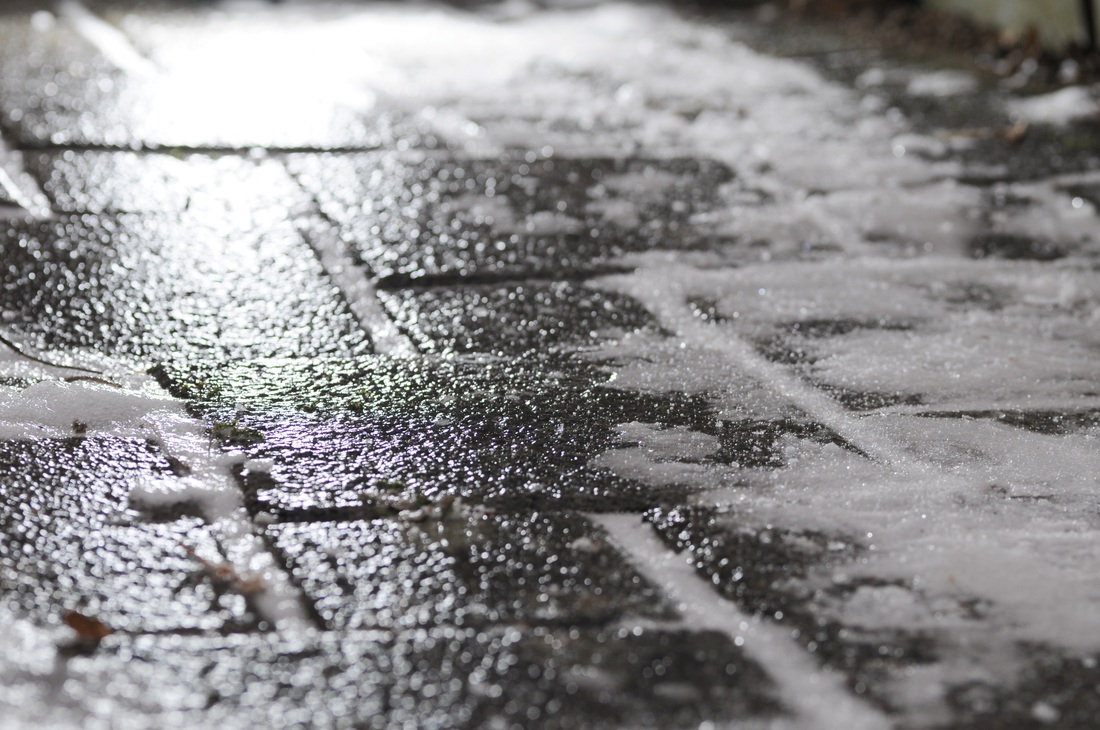Salting and black ice. Keep your family safe from injury over the coldest months of the year.11/17/2014 Black Ice: How to Spot This Winter Driving Danger
By Kristen Rodman, AccuWeather.com Staff WriterNovember 17, 2014; 5:24 AM ET More Sharing ServicesShare|Share on facebookShare on twitterShare on linkedin Winter brings many dangers for motorists, with one of the most threatening being slippery and hard-to-spot black ice. "The biggest danger [with black ice] is that you are at the mercy of your vehicle and the ice until your car passes over it," Vice President and National Director of AARP Driver Safety Julie Lee said. Black ice forms when the air is at 32 degrees or below at the surface and rain is falling, according to AccuWeather Meteorologist Andrew Mussoline. The ground temperature causes the precipitation to freeze upon impact, thus creating ice. Sleet and the refreezing of snow or water can also generate black ice. This type of ice gets its name from its ability to blend in with its surroundings. "It's called black ice because it tends to look like the rest of the pavement on the road, but it's actually clear," Lee said. The complexion of black ice makes it extremely difficult to spot, but using a car thermometer as an initial gauge can be helpful in determining the road conditions. A car thermometer, like any digital thermometer, tries to find the air's ambient temperature. So, if a vehicle's thermometer is close to freezing, the car driver should be cautious on the roads. RELATED: You've Never Seen a Snowflake in This Much Detail AccuWeather Winter Weather Center The Top 5 Least Known Dangers of Winter While the sensors themselves are usually very accurate, their placement on a vehicle can make them less reliable. Located outside the car, behind the front bumper, these sensors sometimes pick up heat from the car's engine, resulting in a higher temperature reading, according to AccuWeather Meteorologist Frank Strait. In addition, these thermometers can also read lower if rain water hits the sensors and evaporates while the car is at a higher speed. Overall, car thermometers give relatively accurate readings, but for various reasons they can be incorrect, so they should not be used as the absolute authority, Strait said. Due to the restrictions of a car's thermometers, the best way to know if roads are icy before heading out the door is to be aware of when, where and how black ice forms. The prime times for the development of this ice are around dawn and in the late evening, when temperatures are typically the lowest. During the day, the best thing to do before getting in a vehicle is to take a look at the pavement. "If the pavement is dry but you are seeing spots of pavement that look dark and glossy, that is probably going to be black ice," Lee said. Before getting on the roads at night, drivers should be informed of the area's weather conditions, as black ice is hardest to see in the dark, according to Lee. The most common locations for the emergence of black ice are shaded or tree-covered parts of driveways and roadways due to the lack of sunlight and bridges and overpasses because of their ability to freeze quickly. While driving on black ice is similar in some regards to driving on snow, the biggest difference between the two is the amount of traction the vehicle retains. "With snow there its still some traction, whereas on ice there is no traction and that's where it becomes very dangerous," Lee said. Due to the lack of traction a car has on ice, the basic rule for driving on black ice is to stay calm and let the vehicle pass over it, according to Lee. Tips to Stay Safe While Driving on Black Ice: 1. Do not hit the brakes, instead keep your steering wheel steady. 2. Lift your foot off the accelerator. 3. Do not overcorrect your steering if you feel your car sliding.
0 Comments
Leave a Reply. |
Archives
June 2016
Categories
All
|

 RSS Feed
RSS Feed
